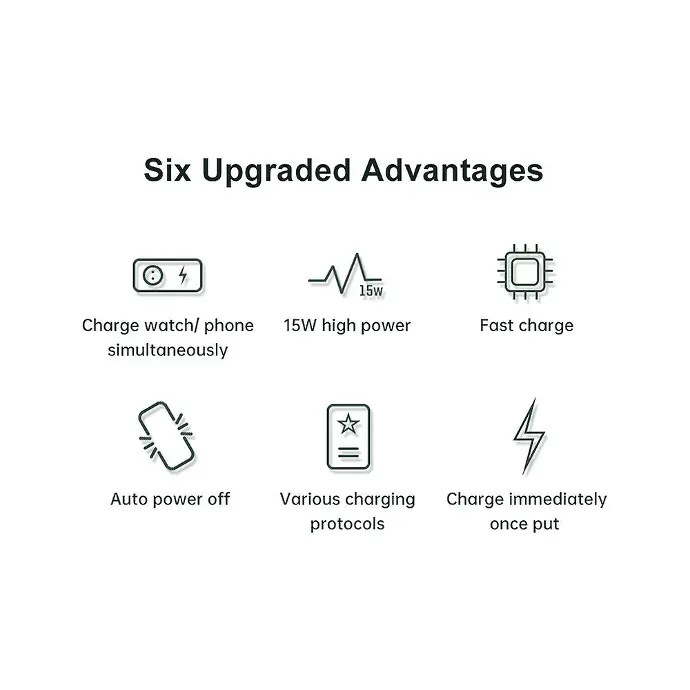Fast charging has become a buzzword in the smartphone world, promising lightning-fast battery replenishment. But with all the technical jargon and conflicting information out there, it's easy to feel confused.
Simple Charging Explained
Imagine a standard charger as a trickle of water filling a bucket. Fast charging is like a powerful hose – it fills the bucket much quicker! It achieves this by delivering more power (measured in watts) to your device, typically through a combination of increased voltage and amperage.
Simple Charging vs. GAN Charger
Simple Charger
- This is the standard charger that typically comes with your phone.
- It uses a basic design and provides a fixed amount of power output, usually 5V and 2A (10watts).
- It charges your phone slowly but safely.
GAN-Charger (Potential Differences)
Faster Charging
- GaN technology allows for higher power output compared to traditional chargers. This translates to significantly faster charging times for your devices.
- GaN chargers are remarkably smaller and lighter than their silicon counterparts. This makes them incredibly portable and perfect for travel or on-the-go use.
- Many GaN chargers boast multiple USB ports, allowing you to charge several devices simultaneously. Additionally, GaN technology offers improved efficiency, reducing wasted energy during the charging process.
- GaN chargers are known for their robust build quality, making them a reliable and long-lasting investment.
Compact Design
Multiple Ports and Efficiency
Durability
Why You Might Prefer a Gan-Charger
Speed Demon
- If you're constantly battling a low battery, a GaN charger can be a lifesaver. Its higher power output translates to significantly faster charging times, getting you back to full power in a fraction of the time compared to a standard charger.
Pocket Rocket
- Tired of bulky chargers taking up precious space in your bag? GaN chargers are remarkably compact and lightweight. Their smaller size makes them ideal for travel, commuting, or simply keeping your tech setup streamlined.
Multitasking Master
- Do you juggle multiple devices like a pro? Many GaN chargers boast multiple USB ports, allowing you to simultaneously charge your phone, tablet, and other gadgets with ease. No more scrambling for chargers or waiting for one device to finish before charging another.
Energy Efficient Warrior
- GaN technology is more efficient than traditional chargers, meaning less energy is wasted during the charging process. This translates to lower electricity bills and a reduced environmental impact – a win-win for your wallet and the planet.
Built to Last
- Don't settle for a cheap charger that craps out after a few months. GaN chargers are known for their robust build quality, ensuring reliable and long-lasting performance. While they might have a slightly higher initial cost, their durability makes them a worthwhile investment in the long run

Choosing the Right Fast Charger
- USB-C PD Charger: This is the standard for fast charging. Look for one with at least 18 watts for iPhones and follow your device manufacturer's recommendations for other phones.
- Wattage: While chargers can go much higher, Apple recommends staying below 20 watts for iPhones as higher wattages likely won't significantly impact charging speed.
- Certification: Ensure the charger is MFi (Made for iPhone) certified for iPhones or carries relevant certifications for your device for guaranteed compatibility and safety.
Slow Charging vs. Fast Charging
- Method: Typically uses the charger that came with your phone or a standard USB charger.
- Speed: Takes longer to fully charge your device (usually several hours).
- Benefits:
- Gentler on your battery, leading to potentially longer battery life in the long run.
- Less heat generation, reducing the risk of damage to your phone's internal components.
- Often more affordable chargers.
- Drawbacks:
- Can be inconvenient if you need your phone charged quickly.
- Method: Utilizes a charger with higher power output, often identified as "fast charging" or with a higher wattage rating.
- Speed: Significantly faster charging times, potentially reaching 50% or more charge in under 30 minutes.
- Benefits:
- Ideal for quickly topping up your battery when you're short on time.
Slow Charging
Fast Charging
Fast Charging FAQs
Is 5V 2A fast charging? No, 5V/2A (10 watts) is faster than standard charging but not considered true fast charging by today's standards.
Is 18W fast charging? Yes, 18 watts is considered fast charging for most devices.
Do fast chargers damage the battery?
Not necessarily. Modern phones have safeguards, but frequent fast charging can contribute to slight battery degradation over time
Conclusion
Fast charging is a convenient time-saving technology. While it can have a minor impact on battery health over time, the benefits often outweigh the drawbacks for most users. By choosing the right charger and following these tips, you can enjoy the benefits of fast charging while keeping your phone's battery healthy.
The Fast Charging Is it a lifesaver or a battery killer?